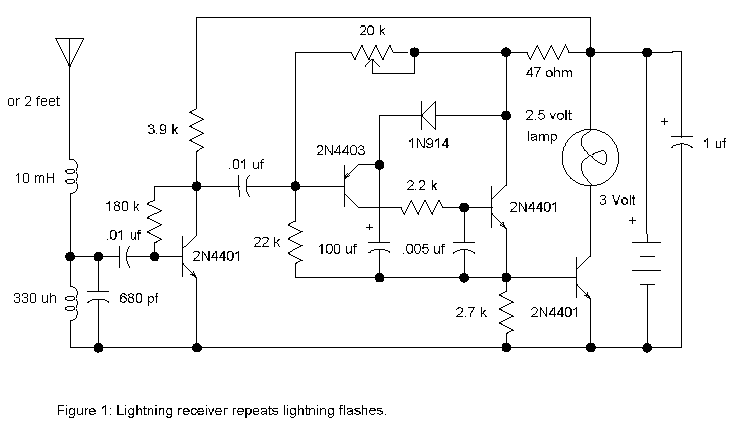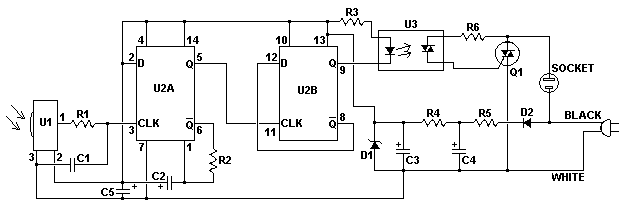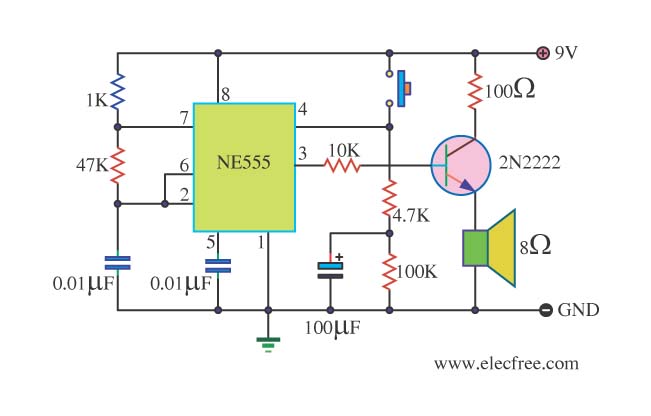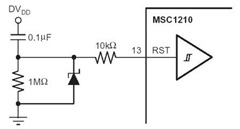
Automatic night light circuit that switches off after a preset time
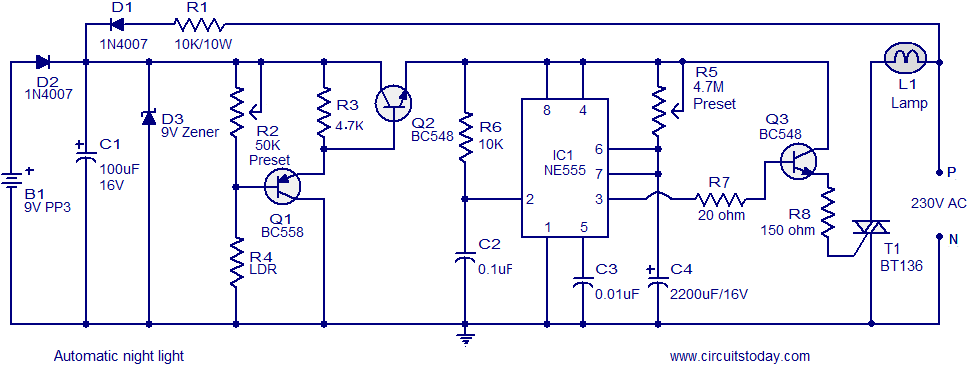
A simple and inexpensive automatic night light circuit designed using the timer IC NE555, which extinguishes after a preset time. This time can also be adjusted.
The automatic night light circuit utilizes the NE555 timer IC configured in monostable mode. When the circuit is powered, the timer is triggered, and it activates an LED or a small light bulb for a predetermined duration. The timing interval is adjustable, allowing users to set the desired duration of illumination according to their needs.
The circuit generally consists of a few key components: the NE555 timer IC, a resistor, a potentiometer for timing adjustment, a capacitor, and the load (LED or bulb). The resistor and capacitor values determine the timing period, which can be calculated using the formula:
\[ T = 1.1 \times R \times C \]
Where:
- \( T \) is the time in seconds,
- \( R \) is the resistance in ohms,
- \( C \) is the capacitance in farads.
In this setup, the potentiometer allows for fine-tuning of the resistance, thus providing flexibility in setting the duration for which the light remains on. When the ambient light level is low, a light-dependent resistor (LDR) can be incorporated to automatically trigger the NE555 timer, ensuring that the light only activates in darkness.
The output from the NE555 can drive an LED directly or control a transistor that, in turn, drives a higher power load. This design is efficient and cost-effective, making it suitable for various applications, such as hallway lighting, garden lights, or bedside lamps. The simplicity of the circuit also allows for easy assembly and troubleshooting, making it an ideal project for electronics enthusiasts and beginners alike.A simple and cheap automatic night light circuit desingned based on timer IC NE555 that extinguishes after a preset time. This time can be adjusted too.. 🔗 External reference
The automatic night light circuit utilizes the NE555 timer IC configured in monostable mode. When the circuit is powered, the timer is triggered, and it activates an LED or a small light bulb for a predetermined duration. The timing interval is adjustable, allowing users to set the desired duration of illumination according to their needs.
The circuit generally consists of a few key components: the NE555 timer IC, a resistor, a potentiometer for timing adjustment, a capacitor, and the load (LED or bulb). The resistor and capacitor values determine the timing period, which can be calculated using the formula:
\[ T = 1.1 \times R \times C \]
Where:
- \( T \) is the time in seconds,
- \( R \) is the resistance in ohms,
- \( C \) is the capacitance in farads.
In this setup, the potentiometer allows for fine-tuning of the resistance, thus providing flexibility in setting the duration for which the light remains on. When the ambient light level is low, a light-dependent resistor (LDR) can be incorporated to automatically trigger the NE555 timer, ensuring that the light only activates in darkness.
The output from the NE555 can drive an LED directly or control a transistor that, in turn, drives a higher power load. This design is efficient and cost-effective, making it suitable for various applications, such as hallway lighting, garden lights, or bedside lamps. The simplicity of the circuit also allows for easy assembly and troubleshooting, making it an ideal project for electronics enthusiasts and beginners alike.A simple and cheap automatic night light circuit desingned based on timer IC NE555 that extinguishes after a preset time. This time can be adjusted too.. 🔗 External reference


